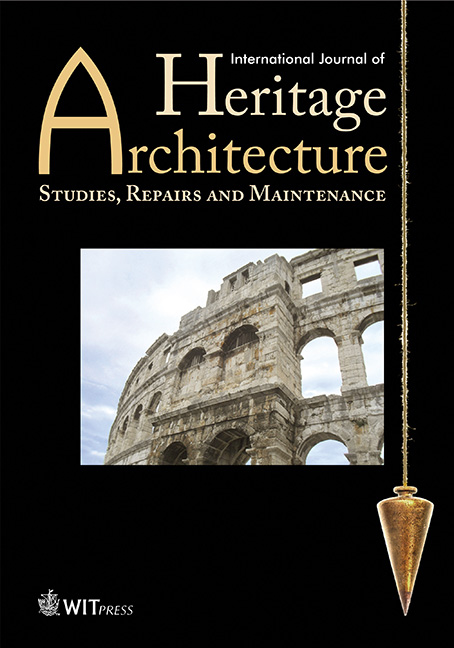Masjid Jami Kali Pasir: In between ‘myth’ and a need for historical accuracy
Price
Free (open access)
Volume
Volume 1 (2017), Issue 3
Pages
9
Page Range
355 - 364
Paper DOI
10.2495/HA-V1-N3-355-364
Copyright
WIT Press
Author(s)
F. HENDOLA & A.J. PRIADI
Abstract
Since 2011, Masjid Jami Kali Pasir (Kali Pasir Mosque) has been legitimated as an architectural herit- age by the government of Tangerang city, West Java, Indonesia. It is located at the heritage site of Pasar Lama-Kali Pasir where Chinese settlements are also present. There are a few opinions that consider the mosque has Chinese architectural style, which was used to ‘mingle’ with Chinese settlements near it. However, lack of accurate historical documentation of Masjid Jami Kali Pasir makes those assumptions questionable. Moreover, despite its style and history, Masjid Jami Kali Pasir is hard to be recognized because it is hidden in between houses. On this basis, this article is an attempt to know how Masjid Jami Kali Pasir impacts on the characteristic of Pasar Lama-Kali Pasir heritage site from an architectural and urban design point of view. By exploring the mosque’s architecture and spatial conditions around it, we acknowledge how significant its presence is to be preserved although it lacks a valid historical data. We analyse the urban structure of Pasar Lama-Kali Pasir area to know its characteristic.
We also observe Masjid Jami Kali Pasir’s latest condition to search if there is any common physical appearance between the mosque and its surroundings. Then we figure how the ‘myth’ about the mosque occurred. From the observations and analysis, we assume that the ‘myth’ about the mosque plays an important role in making Masjid Jami Kali Pasir significant as a heritage site.
Keywords
Chinese architecture, heritage, historic building, Islam architecture, mosque, myth, preservation.




